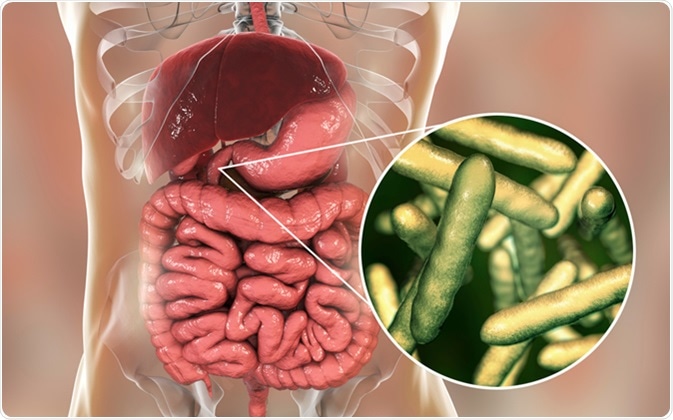Microbial metabolites are chemical or carbon compounds isolated from microorganisms.
‘Bioactivity’ of Microbial Metabolites
Bioactivity or biological activity of the metabolite may be in vitro, in vivo, or at the level of whole organism.
The primary metabolites include polysaccharides, proteins, nucleic, and fatty acids; while the secondary metabolites are low molecular weight (MW<3000) compounds. The secondary metabolites may have antimicrobial, anti-tumour, or anti-viral properties. Non-antibiotic microbial metabolites are often bioregulators or biochemical modulators.
Applications of Bioactive Microbial Metabolites
These products are often used in medicine and agriculture fields. They are also used as a start product for further chemical or other modifications. In several drug designs, the lead compounds for generating new analogues or templates are often microbial metabolites.
Distribution of Microbial Metabolites
Antibiotics and other bioactive microbial metabolites are produced by both prokaryotes and eukaryotes. Among prokaryotes, Bacillus, Streptomyces, Mycobacteria and Pseudomonas species produce the highest amounts of metabolites.
Fungi, including ascomycetes, basidiomycetes, filamentous and endophytic fungal species produce 38% of all microbial metabolites.
Among higher species, algae, lichens, and vascular plants contribute several antimicrobial, anti-tumour, and antiviral compounds. Porifera, Mollusca, Cnidaria, Anthozoa, Echinodermata, and Bryozoa, among the animal kingdom are rich sources of metabolites. Antimicrobial active compounds have also been isolated from insects, worms, amphibians, and terrestrial vertebrates.

Bryozoa - Cristatella mucedo - moss animal - bryozoans - darkfield. Image Credit: Lebendkulturen.de / Shutterstock
Types of Activities
Antibiotic
Out of the known microbial metabolites, 60% show antimicrobial activity. Among the antibiotic metabolites, 66% show activity against gram-positive bacteria, 30% show activity against gram-negative bacteria, 5% show activity against mycobacteria, and 34% show antifungal activity.
The origin of the metabolites may also reflect their functions. 70−75% of metabolites from bacteria and 74% of metabolites from actinomycetes show antibacterial/antifungal activities.
Antitumor activities can be observed in 30% of metabolites from actinomycetes, 24% of metabolites from bacteria, and 27% of fungal metabolites.

Tropheryma whipplei bacteria in human duodenum, the causative organism of Whipple's disease, 3D illustration. Image Credit: Kateryna Kon / Shutterstock
Other Bioactivities
The frequency of the metabolites with activities other than antibiotics is highly variable. Only 38% of metabolites form actinomycetes have bioactivities other than antimicrobial. However, 72% of microscopic fungal metabolites and 58% of basidiomycetes metabolites show ‘other bioactivities’.
These differences may arise from the different biosynthetic capabilities and the type of chemical compounds produced by different taxonomic groups.
Chemical Diversity of Microbial Metabolites
A highly chemically diverse group of chemicals are present in this group which ranges from simple structures such a sacrylamide to complex macrocyclic colubricidin which consists of macrolactone ring, pyridine, and pyrrole groups. Even though the number of microbial metabolites ranges in tens of thousands, higher chemical diversity is currently required due to the rise in multidrug resistance and new pathogens.
With the present range of tools, only a small portion of diseases can be treated and cured. The deficiency of new types of metabolites arises from depletion of the current biological resources and imperfect methods to screen new molecules.
Structural Features of Microbial Metabolites
The amino acid derived peptide compounds, including β-lactams, constitute around 5,000 compounds. The macrolactones, polylactones and ansalactones consist of simple, 8 to 12 membered lactones and macrolides; other macrocyclic lactones also constitute a large number of microbial metabolites. Other structures include quinone derivatives and simple or complicated sugar derivatives.
Further Reading
Last Updated: Jul 18, 2023